Susanne Kischnick is a professional event and headshot photographer of 15 years experience and has photographed numerous Toastmasters conferences in France and Europe since March 2012. She has covered all levels from club to area and division to district as a photographer and also as a speaker.
I agree with her when she says that: “For me, photographing people is serving the community, providing quality images for communication and respecting the people I portray“. Susanne definitely contributed to immortalize our conferences with compelling images and made a difference in the quality of communications and Toastmasters memories.
In this article, Susanne shares her proposed “Seven step leadership program for visual communications”. It stresses the importance for event organizers in enabling the photographer to collaborate with all members of the organizing committee and assign them this official role.
Also highlighted are the qualities of how a photographer’s work at events is dependent on the proper briefing and related updates in order to unleash their full creative potential. Events organizers need to make sure the photographer understands what is expected from them especially as competitions have last minute changes.
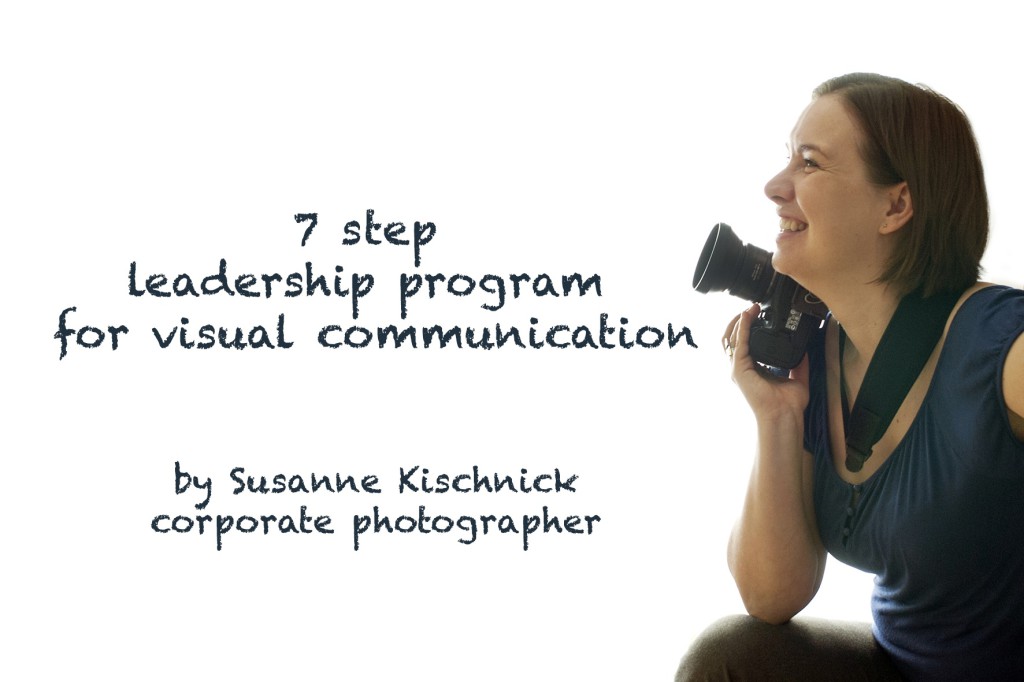 1) Plan ahead
1) Plan ahead
As an event organizer your role is to compose a team of officers and service providers to facilitate the conference. Often, hiring a photographer is at the bottom of the priority list.
Why hire a photographer? An experienced photographer can be an important ally to your visual communications. He can consult with you to find existing photos to promote the upcoming event, and collaborate with the social media and public relations team during and after the event.
A good photo tells a story and for effective story telling, you need to address a specific audience. Like a speaker, a photographer also gets better results when he’s got a clear message in mind about what he wants to communicate. When the motto is “Laugh & Learn” than the photographer can capture candid moments of curiosity, shared fun and discoveries.
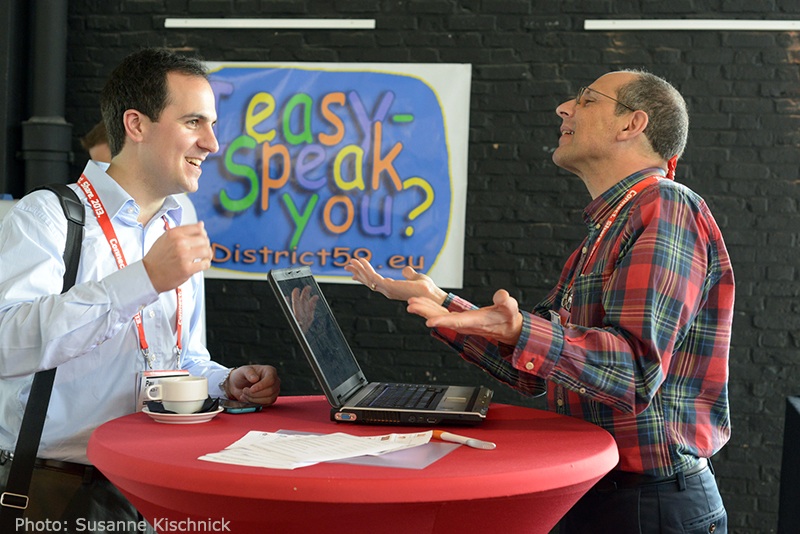
Together review the program and establish a check list of the key moments of the conference and what additional photos you want. Keeping in mind the usage of the photos will make it easier to determine what needs to be photographed. Do you need them for promotional flyers, for social media, or for a slide show at the closing ceremony of your conference? Do you promote your club, your division or your district?
The usage also determines the deadlines. I do not believe that photographing everything is possible nor is it ecological. Wisely chose your focus, establish a list of key moments and a clear message you wish to communicate about the event. Your photographer cannot photograph and edit photos at the same time. A clear agreement about the message to communicate, the number of photos required and the deadline for publication (social media coverage, conference screening, etc.) allows you to establish a precise schedule.
2) Team up
Collaboration and delegation are the key to effective leadership and a successful conference organisation. A reportage photographer collaborates with many different facilitators throughout the day.
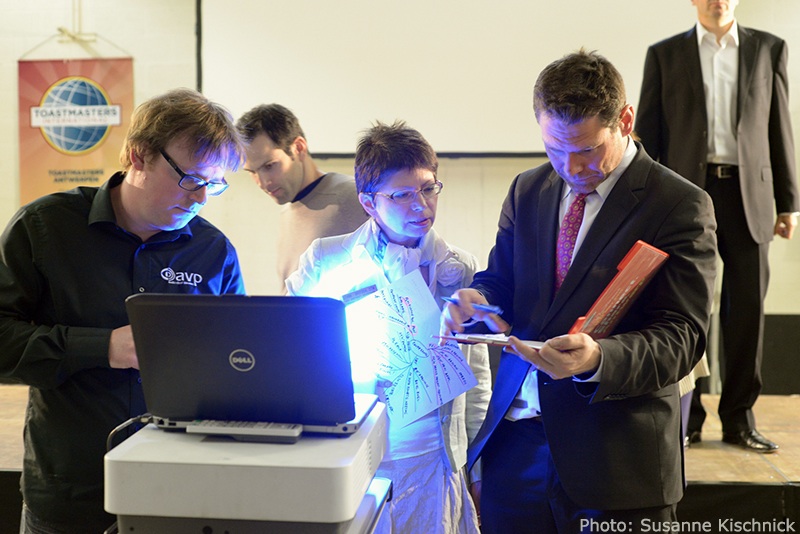
Foster a close collaboration between the photographer and social media responsible person and provide technical assistance to process photos faster. Update the photographer with all last minute changes in the program and room allocation in real time. If you hold simultaneous contests at a district conference, I suggest you hire two photographers, since entering or leaving rooms is restricted during speech contests.
Provide your official photographer with an all access team badge. People will be more confident to pose for him. Allocate a quiet space to work on photos, as well as food and coffee with priority access. He is working constantly and needs to be taken care of in order to perform.
3) Light condition in the event place
A photographer cannot work without light. Good quality light allows him to take candid shots, but when the room is too dark, a flash light will be required. If you don’t have a light technician, the photographer can be a valuable consultant for stage lighting of the speakers.
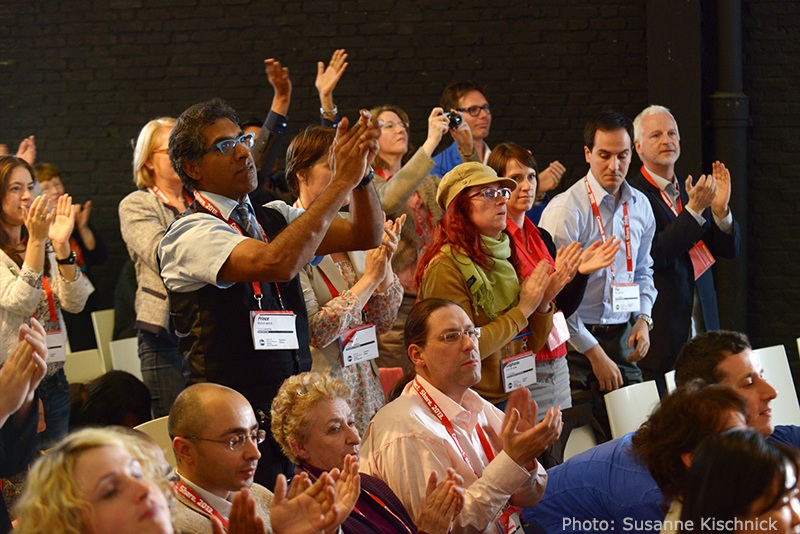
Introduce the light technician to the photographer. If you’re planning dramatic light effects (turning off the lights to create suspense or present a slide show) consult with the photographer and negotiate a win-win solution. You may decide that you don’t need photos of that presenter, but if you want photos, you’ll need to turn on the lights at one moment or accept flash lights. It’s all a question of priorities and easy to negotiate. What matters is to address the subject.
4) Photos of the contestants
The contest master presents the contest rules at the opening of the conference. When he asks the audience to turn off their cell phones and refrain from taking any photos during the contest, he may point out the official photographer and announce special conditions for him.
Professional speakers need photos and videos of their speaking gigs for their professional portfolio. In order to authorize recording, the contest chair and every contestant must agree. Otherwise there will be no photos or videos of the speakers during a speech contest.
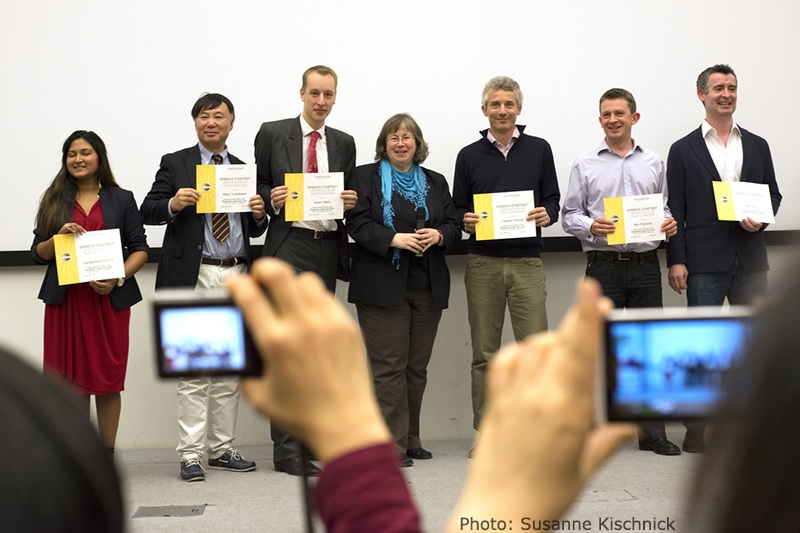
If photography during the speeches is authorized, it should be done only by the person designed either by the organizing committee or the contestant. To respect the speaker, photos should be taken without flashlight, limited to 35 shots and the best moment is around the climax of the speech.
People in the audience want to take photos to share the key moments of the event with their club members. Inform the audience when and how they will access the photos of the event.
If they are reassured, they can enjoy the event better. This is where upfront negotiation with your photographer comes in handy.
5) Photography budget included in the event organization expenditure
Let me share a story: « A woman was strolling along a street in Paris when she spotted Picasso sketching at a sidewalk café. She asked Picasso if he might sketch her, and charge accordingly.
Picasso obliged. In just minutes, there she was: an original Picasso. “And what do I owe you?” she asked. “Five thousand francs,” he answered. “But it only took you two minutes ,” she politely reminded him. “No,” Picasso said. “It took me all my life.” »
What makes it worth investing in a professional photographer? High quality photos communicate effectively the success of a conference, promote upcoming conferences, and attest the benefits of the Toastmasters method.
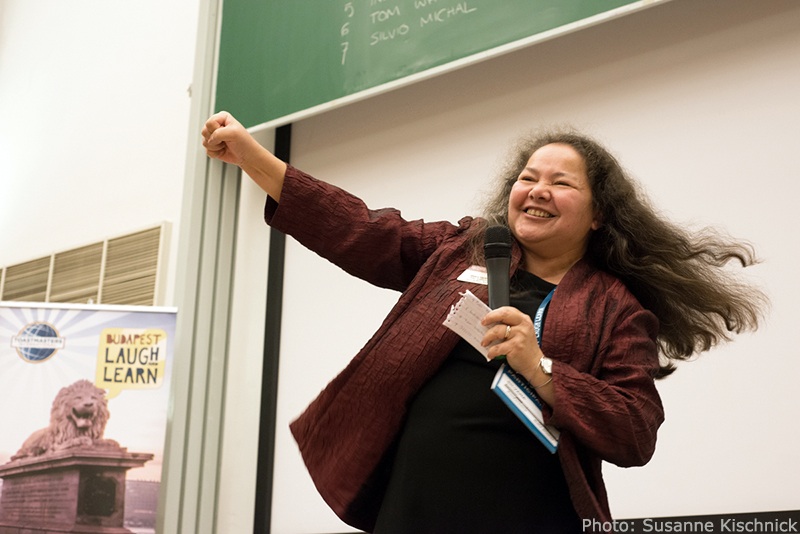
I’ve been told that my photos make conferences look fun to attend. And fun is not the first thing that usually comes to mind when people think about public speaking, contests or conferences. Capturing fun requires mastery of the technical part, trained reflexes and an artistic eye. All of those imply years of experience.
If you’re organizing a division or district conference and you budget sound and light technicians, also consider hiring a professional photographer’s service. Why pay a photographer? Professional photography requires expensive equipment and training: cameras, lenses, computer, software/apps, archival storage, and more. Photographers spend many hours after the event selecting and processing photos. Have you ever asked a photographer to send you a photo as a favor compared to sending you a photo that you paid for? You often have to wait a long time to receive a photo for free, if ever. Paid photography guarantees you prompt delivery to an agreed deadline.
6) Copyright – image rights of the photographer
Even though legislation differs from one country to another, at the bottom line, the photographer is always the intellectual owner of his images. Therefore, every publication has to be authorized and signed with the photographers name.
Please request authorization from the photographer to publish his photos, communicate the media of diffusion and send him the publication link. Sign every publication with the photographer’s name and a link to their social media presence.
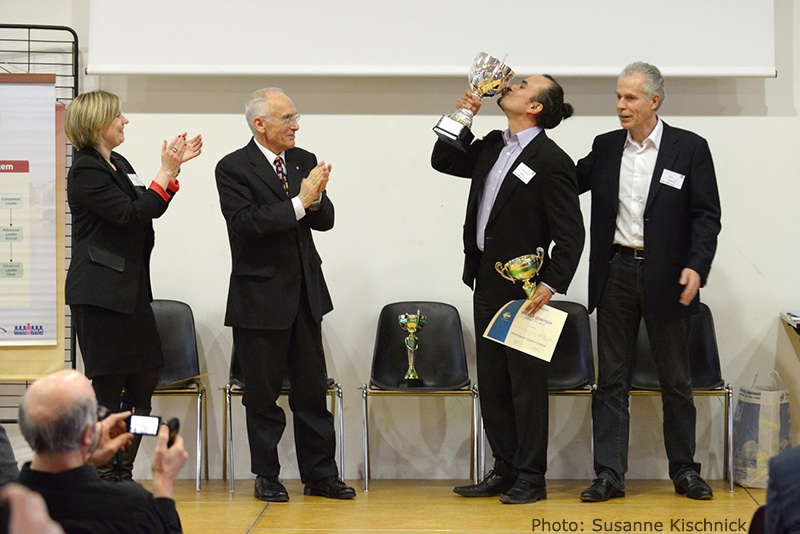
You cannot acquire all rights inclusive images. You can only purchase prints or distribution rights. The photographer always stays the intellectual owner of his images. When you check the general conditions on stock agency websites you’ll see that all distribution rights are somewhat limited, royalty free images as well as rights managed images. Distribution rights are calculated according to the criteria of image size, time period, territory (regional, national, international), media (personal use, internet, print, cover page), and audience (print run, website visits). As an image publisher you acquire the right to use images without becoming the owner, meaning you have no right to alter or resell the image.
You pay for an image or not, signing with the author’s name is an act of courtesy and acknowledgement.
7) Image rights of the represented people
Everyone has a personal right about the publication of his individual features. You must not publish photos of people without their consent. At a conference, if people pose for the official photographer (with badge) they implicitly agree to be part of the conference coverage. Whereas if you take personal photos during a conference, you should reserve them as a personal souvenir and refrain from publishing unless you ask for authorization.
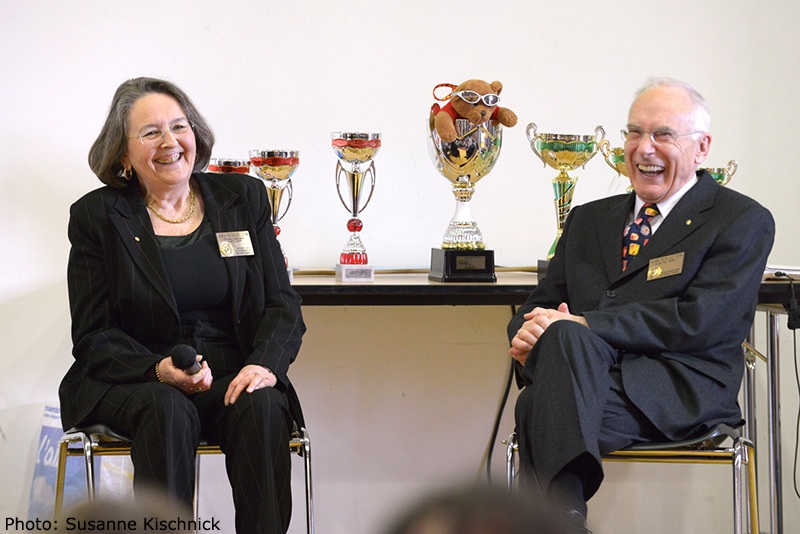
From my experience, people often get picture shy because those taking photos are not explicit about the usage they’re going to make of the images taken. Please be transparent and respect people’s privacy. Everybody has the right to decline internet publication and have their image removed by request.
As a professional photographer, I don’t take individual headshots at conferences because it’s all about the group experience. Publishing photos of people in a group then becomes press coverage and therefore independent of the individual person. Always make sure photos are published within the original context and without prejudice for anyone represented in the picture.
Following these points may require more time and logistics but it will also enhance the experience. The conference doesn’t end when you say goodbye, it continues as long as we all share our memories.
Susanne Kischnick – corporate photographer

Website : www.susannekischnick.com
Linkedin : http://www.linkedin.com/in/susannekischnick
Facebook : https://www.facebook.com/Susanne.Kischnick.Photography
To relive the memories of past conferences, click on this link:
http://susannekischnick.photoshelter.com/gallerycollection/Toastmasters/ C0000bTL65rGqxbg
Text reviewer: Cindy Piccolo; Curator&Pitch: Ruxandra Balboa-Pöysti
1 thoughts on “How to photograph at a Toastmasters event: tips from a professional”
Comments are closed.